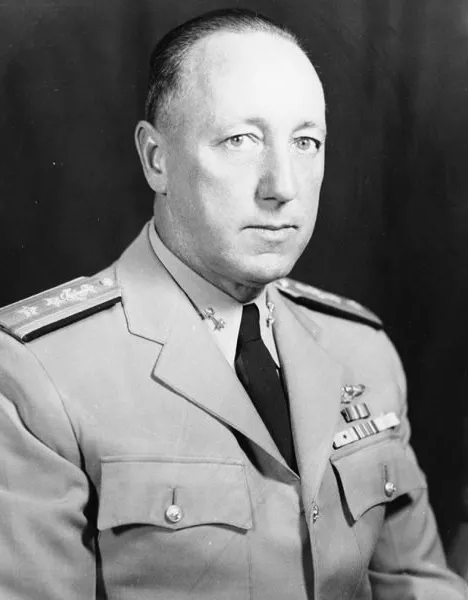Vice Admiral Charles A. Lockwood USN
Vice Admiral Charles A. Lockwood USN

Image provided by Royal Australian Navy
Charles Andrew Lockwood had an extraordinary 35-year naval career that spanned two World Wars and saw him rise to the rank of Vice Admiral, including a key Australian posting. As the legendary commander of Submarine Force Pacific Fleet during World War II, he is credited with devising tactics that made submarines vital players in the Allied victory.
Born in Midland, Virginia, Lockwood graduated from the US Naval College in 1912. His rise in the US Navy was nothing short of meteoric. By 1914 he had his first submarine command. When America entered World War l in 1917 he was made commander of Submarine Division 1, Asiatic Fleet.
After a stint in London as the US Navy's eyes and ears on the UK's use of submarine warfare, in 1942 Lockwood was assigned to Perth, Western Australia, as Commander, Submarines, Southwest Pacific (COMSUBSOWESPAC). He also acted as Commander Allied Naval Forces, Western Australia, overseeing major bases at Fremantle and Exmouth (Codename "Potshot"), amongst others.
It was Lockwood's strong leadership and devotion to his sailors that earned him the nickname "Uncle Charlie". Long submarine patrols often meant poor rations as supplies ran out. Lockwood insisted on providing adequate rest and recuperation (R & R) for his sailors when they returned to port, as well as such delicacies as crates of ice-cream and leafy vegetables to greet returning crews.
Lockwood also lobbied tirelessly for the most effective submarines and weaponry, personally overseeing tests that proved the unreliability of US torpedoes at the time. His diligence is credited with helping spark improvements that made them highly effective weapons in 1944 and 1945.
Crucially, Lockwood cleaned out the "dead wood", replacing timid and unproductive submarine commanders with often younger and more aggressive officers. After the war, Lockwood assumed the prestigious post of US Naval Inspector General until 1947.
In retirement, he continued his connection with Australia, acting as technical adviser on the 1959 post-apocalyptic war film “On The Beach”, shot in and around Melbourne, Victoria. Lockwood also wrote or contributed to a string of best-selling books on naval history and submarine operations, including “Tragedy at Honda” , “Sink-Em All”, “Through Hell and Deep Water”, “Hell at 50 Fathoms”, “Zoomies”, “Subs and Zeros”, “Hellcats of the Sea”, “Battles of the Philippine Sea”, and “Down to the Sea in Subs: My Life in the U.S. Navy”.
Lockwood died on 7 June 1967, aged 77.